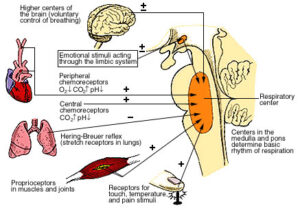Few things are as difficult for a healthcare professional as dealing with patients who have chronic conditions and ongoing discomfort. Not only do you have to help them feel better, but you also need to educate them in regards to what they can do to prolong their life and avoid unnecessary issues.
Taking a Strategic Approach to Symptom Management
Few things are as difficult for a healthcare professional as dealing with patients who have chronic conditions and ongoing discomfort. Not only do you have to help them feel better, but you also need to educate them in regards to what they can do to prolong their life and avoid unnecessary issues.
Taking a Strategic Approach to Symptom Management
In an ideal world, a patient comes in to see you, the issue and cause is identified, a recovery program is implemented, and the patient feels better in a couple of days. Well, as we all know, this isn’t an ideal world.
Many of today’s clinics, health centers, and hospitals are bogged down with patients, overbooked with appointments, and even understaffed. When you combine all of these factors, you get 15-minute time allotments for appointments and a general lack of understanding between the patient and the healthcare professional. This is particularly frustrating for patients with chronic pain who are looking for doctors to give them support and education.
In order to guide your patients through chronic pain issues, you need to meet them where they are and help them better understand their conditions, symptoms, and outlooks. Here are some tips to keep in mind:
1. Let Patients Feel Heard
The most important thing for a patient is that they feel heard. A patient suffering from a chronic condition wants to make sure their team of healthcare professionals is listening to their specific needs. During the first few minutes of any appointment, spend time listening without objection. If you want clarification on anything, make a note and come back to it.
When patients feel heard, they build more trust with you. As a result, the things you say and suggest will hold more weight with them. By listening, you can also identify things that are below the surface, which may not be readily apparent in their direct symptoms.
2. Help Patients Identify Triggers
While a chronic condition may not be curable, there are almost always ways to reduce painful symptoms associated with illnesses. However, many patients don’t fully understand what exacerbates symptoms and what makes them better. It’s up to you to help them identify these triggers so that they can better manage symptoms.
Take, for example, a patient who is struggling with a chronic respiratory issue like asthma. What they may not realize is that their working conditions are actually making symptoms worse by exposing them to toxic fumes and poor air quality. Switching jobs or positions could dramatically change their situation.
Or, consider a patient with arthritis. This individual may not realize that eating things like fats, oils, salt, sugar, and alcohol actually cause additional inflammation and lead to increased pain. By educating them on these triggers, you can help them live a better life.
3. Direct Patients to Emotional Support
While the physical symptoms of chronic conditions are certainly the most obvious, the ongoing nature of these conditions often leads to emotional issues as well. Anxiety and depression are common, especially in those who are actively seeking a cure and cannot find any answers.
As a healthcare professional, it’s good to establish a local network of people and groups who specialize in coaching patients with chronic conditions. There are many therapists, support groups, and organizations that facilitate meaningful emotional healing for various diseases. By directing your patients to these resources, you can provide well-rounded care.
Help Patients Help Themselves
As a healthcare professional, you’re obviously busy. While you may not be able to spend an hour with each person, you can better utilize their time by taking a strategic approach that allows them to help themselves. Keep these tips in mind and remember that chronic conditions are both physically and emotionally draining.







